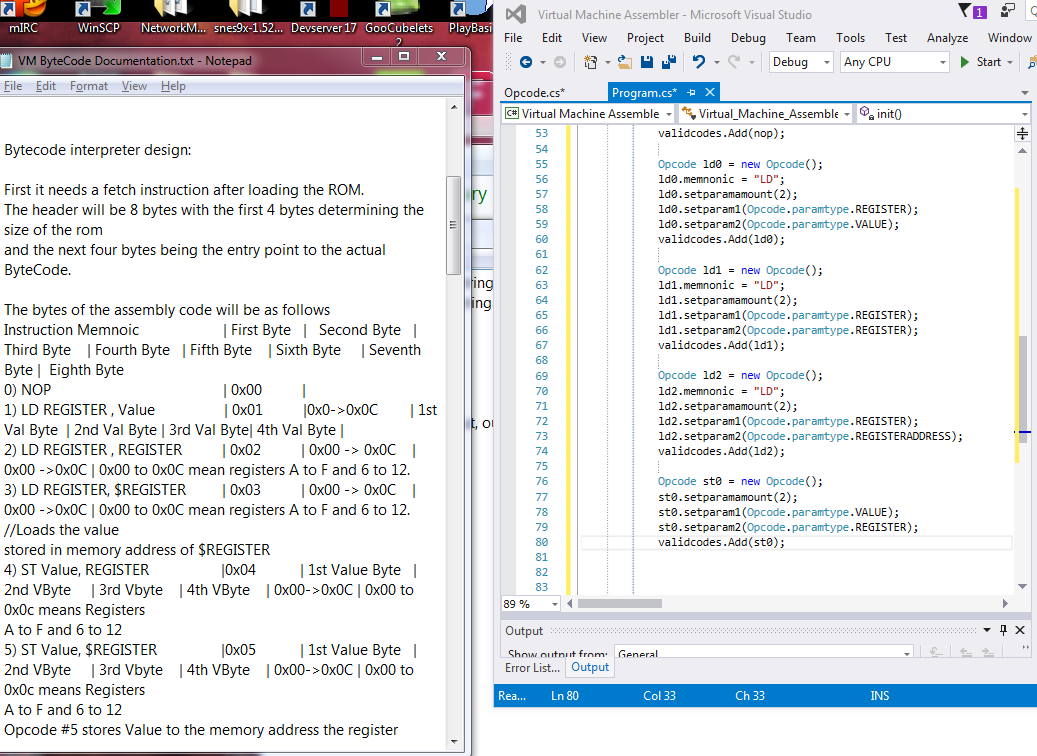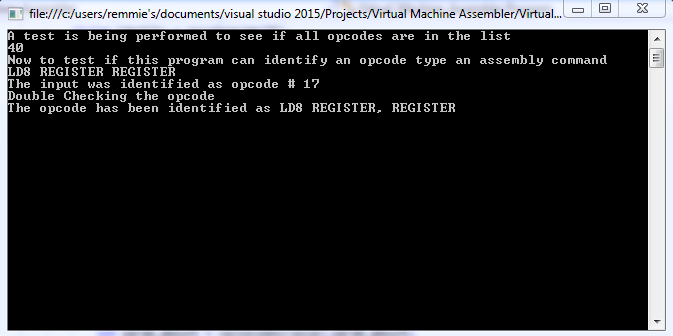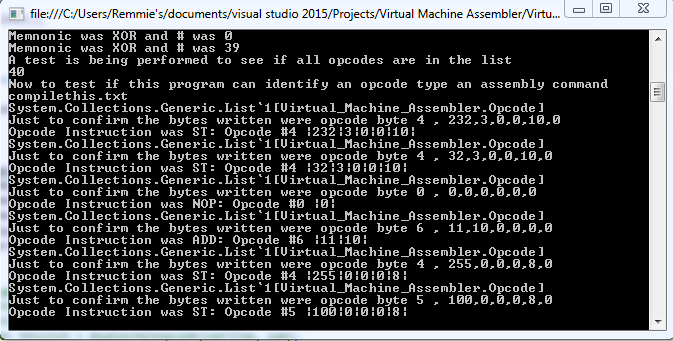READ HERE FIRST
The project is live. The assembler works, everything you need in order to use it is here:
https://www.dropbox.com/s/eii36mktsmgqojz/SmileBasic%20VM%20tools.zip?dl=0
If you have any questions or need any help using it please message me here on this thread.
I will help.
The KEY to the VM is also posted on the site already.
For those who don't have the VIRTUAL MACHINE Key that runs in SmileBasic here it is:
4RQ3X483
PLEASE NOTE
The assembler is for PC.
The Virtual Machine runs inside SMILEBASIC.
The project is DONE and ready for more. If you want to contribute to the project or help work on it please let me know.
I'm willing to accept ideas or help! Let's make SmileBasic amazing!
Everything below this is old and outdated now.
At the current moment I am just starting to plug away at the assembler which will convert the assembly language the virtual machine I created in SmileBasic uses.
This means it'll be feasible to actually write programs for it (finally).
Of course, it's understandable this has taken such a long amount of time.
I intend to port the assembler from C# directly into SmileBasic, as well.
I also intend to port the Virtual Machine from SmileBasic to as many platforms as I can.
At the moment the virtual machine itself is still very open because I didn't want to use the base-foundation version of it. I wanted to create a fork instead (So I always have the original).
I'm going to create a fantasy emulator that works more like the nes / gameboy once I finish the assembler.
It will be forked from the Virtual Machine that already works in SmileBasic.
The virtual machine doesn't come with any graphics/sprite stuff by default. That's up to the end user, but... the game console I'm creating will literally be a old fashioned game emulator.
I'm pushing to see just how much is possible with emulation on SmileBasic but it seems like atleast something the level of GameBoy.
Now, with the assembler it'll be possible to actually create machine code out of assembly.
Assembly language is still not as easy to use.
But, once the assembler is working.
Someone could easily create a program to say-- translate from C to assembly.
Translating from C to assembly is a lot easier than say, translating from C directly to machine code.
I still like the idea of writing in assembly though, for a virtual machine.
It's pretty cool. (and in efficient).
Once the asembler is done I'll be setting up file hosting or something and sharing it.
The assembler won't be done for probably a few days if not a week from now.
Please keep an eye out for my work, because I'm not stopping and I'm going to crank out a massive volume of stuff in the coming weeks, I'm going as fast at it as my life allows.
Hopefully I can create something a bit more powerful than the gameboy, and make it possible for others to make games in it on their pc.
It will also work in SmileBasic.
(The fun part is that since it would work within SmileBasic, as well as on PC you can choose how you make the game, but it ends up working the same on all systems anyway)
That's the dream anyway.
To have something a bit simpler than game maker that lets you literally create the games on pc and then boom drop them into SmileBasic.
I think games will pop up alot faster once this series of tools is done.
I may even consider making Monster Tamer within this emulation system instead of making it properly for SmileBasic. We, Will. See.
The first tech demos that use graphics for the virtual machine will be ready in less than a month. I am going fairly fast here.



 Below, now with error-catching. It can tell you the expected parameters of any assembly input.
Below, now with error-catching. It can tell you the expected parameters of any assembly input.
 I work so fast it scares me now. :P :D
Basically this is only a few steps away from being able to load an external,
convert it to machine code.
and boom.
But sleeptime is coming then i'll be busy all day tommorow with life stuff. so yeah.
two days from now maybe? I also have another task, I'm going to be trying to import the VM to pc, as well as improve it in smilebasic. The advent of a comiler that actually builds something for smilebasic is HUUUUGE. (I mean something on pc that can cross-compile to SB )
I work so fast it scares me now. :P :D
Basically this is only a few steps away from being able to load an external,
convert it to machine code.
and boom.
But sleeptime is coming then i'll be busy all day tommorow with life stuff. so yeah.
two days from now maybe? I also have another task, I'm going to be trying to import the VM to pc, as well as improve it in smilebasic. The advent of a comiler that actually builds something for smilebasic is HUUUUGE. (I mean something on pc that can cross-compile to SB )
 By tommorow I should be able to feed it a text file and have it spit out some vauge bytecode I can them dump into smilebasic and have it run.
By tommorow I should be able to feed it a text file and have it spit out some vauge bytecode I can them dump into smilebasic and have it run. It is also putting this bytecode into an array of bytes. Which I later plan to review and ensure is correct.
So far, it seems correct.
Next step ->Writing to a file then using bin2dat to transfer said file to SmileBasic using SBFM.
Linking input of the controls to ram addresses, and then writing a program that wraps into the ram values which allows reading from ram to indirectly (and through the assembly program itself) control a sprite on the screen.
It is also putting this bytecode into an array of bytes. Which I later plan to review and ensure is correct.
So far, it seems correct.
Next step ->Writing to a file then using bin2dat to transfer said file to SmileBasic using SBFM.
Linking input of the controls to ram addresses, and then writing a program that wraps into the ram values which allows reading from ram to indirectly (and through the assembly program itself) control a sprite on the screen.